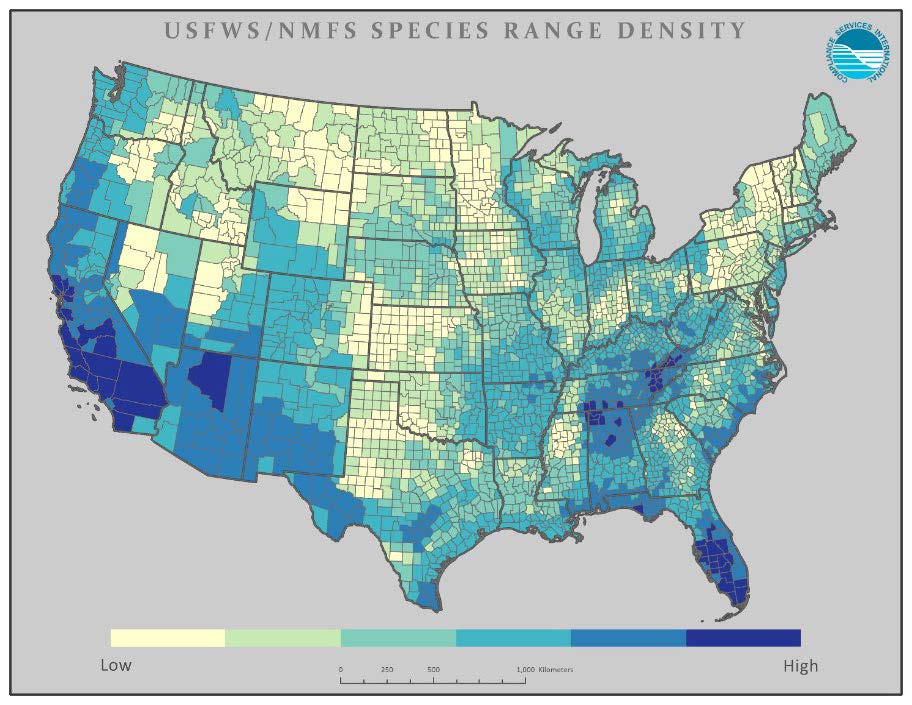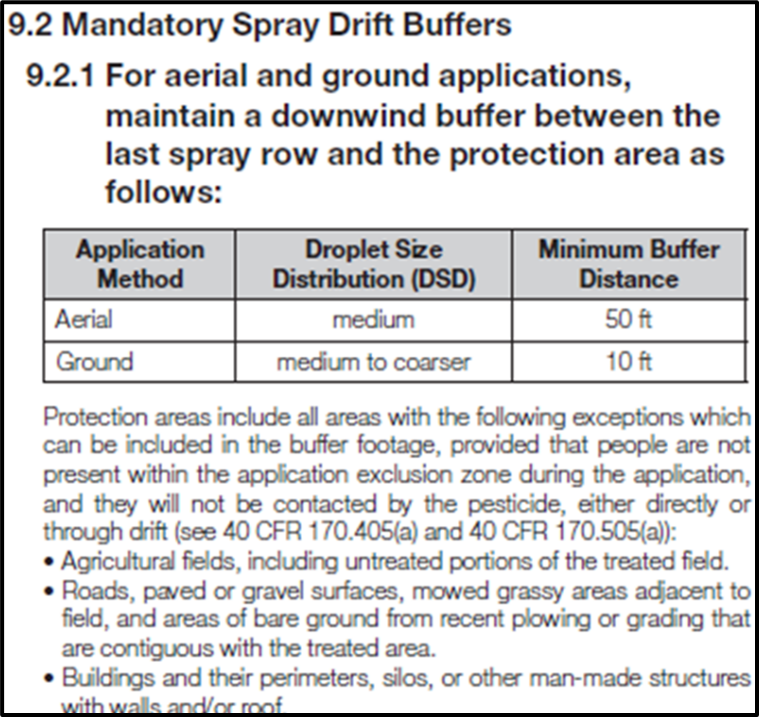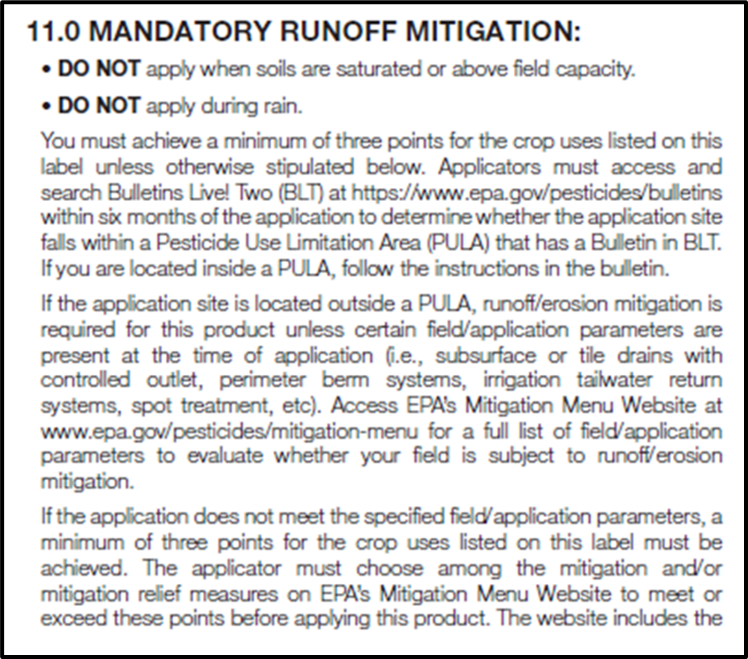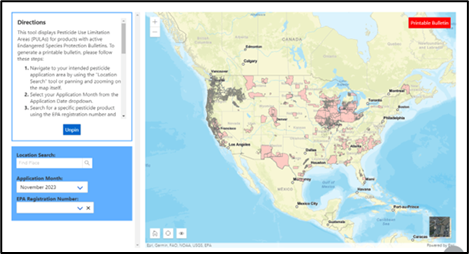Pesticide News - March 7, 2025
Pesticide Applicators Should be Aware of New EPA Measures to Protect Endangered Species
Cecil Tharp, MSU Extension Pesticide Education Specialist
The United States Environmental Protection Agency (EPA) has finalized new measures to protect endangered species from pesticides. Applicators can expect a few herbicide pesticide labels to contain additional endangered species mitigation measures starting in 2025; additional labels containing these requirements will slowly appear over the next 15 years.

Figure 1. United States Fish, Wildlife Service and National Marine Fishery Service Endangered Species Density.
In December 2002, EPA published the Endangered Species Protection Plan (ESPP) for public comment. Upon reviewing comments, EPA published its final approach to field implementation of the ESPP on November 2, 2005. EPA has or will finalize the ESPP review of all: 1) herbicides and rodenticides in 2024, 2) insecticides in 2025, and 3) fungicides in 2026. EPA estimates that all endangered species updates will be distributed on product labels within the next 15 years, with some agricultural herbicide labels updated and distributed in 2025. Labels may include spray buffer requirements (i.e. nozzles, buffers), runoff-erosion requirements, or geographically specific pesticide use limitation areas (PULAs).
Spray Buffer Requirements
Spray buffer requirements will often be included on the product label. If so, the label will include exceptions to buffer requirements, or steps that may be taken to reduce buffer requirements on the label. Liberty Ultra(R), the first pesticide to have ESA label changes available in Montana, has a downwind spray drift buffer requirement of 50 ft for aerial applications, and 10 ft for ground applications; however, many man-made structures, ag fields, and roads may be included as a downwind buffer (Figure 2).

Figure 2. Spray drift requirements for Liberty Ultra and areas that can be included in buffer distance.
Runoff-Erosion Requirements
Applicators must follow runoff or erosion mitigation requirements found on the product label or found on the "Bulletins Live! 2" webpage which may be referenced on the label. If on the label it will be required in all geographic locations. If requirements are found only on "Bulletins Live 2" then it would apply only to the geographic area entered in "Bulletins Live! 2". The label will often require from 3 to 9 runoff-erosion mitigation points to use the product; however, the label will also detail exemptions to runoff-erosion mitigation requirements including perimeter berms, irrigation tailwater return, and spot treatments as listed on the Liberty Ultra(R) product label (Figure 3). A full list of exemptions will be found on the EPA mitigation menu. You can qualify for mitigation relief points based on table 1 of the mitigation menu provided on the product label. If the product label or a bulletin require more points than you qualify for in table 1 of the mitigation menu then you are required to implement one or more mitigation options listed in table 2 of the mitigation menu.
An abbreviated list of mitigation activities worth mitigation relief points will be found on the product label; however, applicators must view the "Mitigation Menu" to see the full list of mitigation activities and associated mitigation relief points. Some common agronomic practices worth mitigation relief points on the "Mitigation Menu" include:
- Runoff vulnerability on county-based map = 0 - 6 mitigation points.
- Three mitigation points in all counties in Montana, except Glacier County. Applications within Glacier County attain 2 mitigation relief credits.
- Vegetative filter strips or field border adjacent to field:
- 20 - 30 ft wide = 1 mitigation relief point
- 30 - 60 ft wide = 2 mitigation relief points
- ≥60 ft = 3 mitigation relief points
- >50% sandy soil = 2 mitigation relief points
- Slope (<3%) = 2 mitigation relief points
- Annual Maximum Seasonal Product Rate:
- 10 - 30% < than annual max seasonal rate = 1 relief point
- 30 - 60% < than annual max seasonal rate = 2 relief points
- ≥60% less than the max seasonal rate = 3 relief points
- No-till = 3 mitigation relief points
- Cover crop with Tillage = 1 mitigation relief point
- Cover crop without tillage = 2 mitigation relief points

Figure 3. Mandatory runoff mitigation requirements for Liberty Ultra.
Applicators will often find that they can meet the runoff/erosion mitigation points required; however, if the mitigation points cannot be met then the applicator cannot apply the product.
PULAs and "Bulletins Live! Two"
The label may ask you to check "Bulletins Live! Two" to view any geographic use limitations in your spray area (Figure 3). Pesticide applicators should print out the geographically specific bulletin report as part of their pesticide applicator records. The bulletin report can be obtained up to six months before pesticide application. The following are steps to navigate and obtain the bulletin report:
- Go to the "Bulletins Live! Two" website and navigate to the intended location of the pesticide application. To find the location, use the "Location Search" tool or by manually dragging the map to your location and using the "+" and "-" buttons in the upper lefthand corner (Figure 4).
- You must select the month when you intend to make your pesticide application. The "Application Month" box is below the "Location Search" box.
- Enter the EPA registration number of the product you are using below the "Application Month" box.
- After typing in the EPA registration number, only the Pesticide Use Limitation Areas (PULAs) for that specific pesticide will appear on the map, and the product name(s) will appear in a box directly beneath the EPA registration number search box. Do not use the EPA establishment number or special need number.
- Click on the "Printable Bulletin" button to obtain the bulletin report.

Figure 4. Default map view of "Bulletins Live! Two" webpage.
If your application site is within a PULA then you must follow all runoff, spray buffer, and other mitigation requirements as outlined. PULA requirements may not permit the application of the product; other times, PULAs may require additional or specific runoff-erosion mitigation points, require additional spray buffer distance, require certain droplet sizes, etc.
For More Information
See the Endangered Species Educational Resources Toolbox that organizes educational resources including guidance documents, handouts, presentations, webinars, and other resources relating to EPA's endangered species work. For any questions on this article or other pesticide education question contact Cecil Tharp, Pesticide Education Specialist, at the MSU Extension Pesticide Education Program office (406-994-5067, [email protected]).
